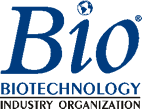
Notably, the backlog of applications may be leading to aggressive production goals for USPTO examiners, which decreases staff retention (the USPTO hires two examiners for every one that stays on the job long enough to learn how to search and examine patent applications in 20 hours or less). Aggressive production goals also are driving the rate of application rejections to historically-high levels.
To this end, BIO has submitted its ideas for consideration by the incoming Administration, including the following:
Reassessment of examiner compensation, retention, and production goals and incentives
The USPTO’s production system in its current form was established in 1976 and has not been fundamentally changed since. Production goals and time per application could be adjusted to account more for the relative complexity of the technology area, and examiners could receive credit proportionate to the relative amount of work required for different applications. In addition, production metrics could be reassessed so as to reduce examiner incentives to trigger requests for continued examination or excessive divisional applications, instead providing greater reward for initial patentability determinations.
PTO branch offices and other measures to facilitate hiring and access to talent
To facilitate hiring and retention of qualified engineers and scientists, the USPTO could consider establishing branch offices in various parts of the country. The existing telework program could be combined with a system of regional branch offices to ensure that examiner staff would have adequate supervision and “face-time” with colleagues and supervisors without burdensome travel requirements. The USPTO could explore whether the costs of regional branch offices could be mitigated by using existing space in federal facilities across the country. We think Cincinnati, Ohio, would be a great location and there is precedent for such a move: after the War of 1812, many considered relocating the the entire U.S. capital to Cincinnati (inland to a growing metropolis).
Pre-first action interviews and issuance of “short form” search reports
In a move that could greatly ease tensions between examiners and applicants, the USPTO could expand programs under which applicants and examiners could meet for an informal pre-examination conference to discuss the application, explain the underlying technology, and agree on ways the application could be improved for more efficient substantive examination. Such a pre-first action interview program could be combined with an abbreviated search report, under which examiners could supply a listing of relevant references with an indication of their likely impact on the patentability of the claims. Based on such preliminary feedback and discussion, applicants should be given the opportunity to make amendments to their claims before their cases enter substantive examination. Currently, the predominant “pre-first action, short form response” is a restriction.
Reassessment of current restriction practice in light of the European unity-of-invention concept
Currently, there is little to prevent examiners from restricting an invention down to every patentably distinct embodiment, which would be searched and examined separately in subsequent divisional applications. The USPTO should consider whether more examination efficiency can be gained by adopting the European unity of invention concept, under which examination could be conducted more efficiently on a single application for a group of closely-related inventions that are linked so as to form a single general inventive concept. (Can I get an Hallelujah, Amen?)
To see the complete letter, click here: ideas-for-reform-of-the-united-states.pdf.

“instead providing greater reward for initial patentability determinations.”
If you want an initial patentability determination then ask for it in a cover letter to the examiner. He’ll probably give you one. Most times we don’t want to do one because there is a feeling that nobody cares what we think is patentable, and it takes a lot of time to go dragging in pieces of the app piece by piece and running them through the 103 grinder.
“The USPTO should consider whether more examination efficiency can be gained by adopting the European unity of invention concept, under which examination could be conducted more efficiently on a single application for a group of closely-related inventions that are linked so as to form a single general inventive concept. (Can I get an Hallelujah, Amen?)”
If I understand it correctly, EPO examiners can simply knock out your ind and then declare a massive lack of unity of invention if they so please. Even though they rarely do this.
Trust me, you think you want it, but you probably don’t.
My suggestion to you: stop filing independent and distinct inventions in the same application just because you can make a claim that reads “A product comprising: a material” as an ind.
If you bring up establishing branch offices for the PTO, the first location considered will be West Virginia.